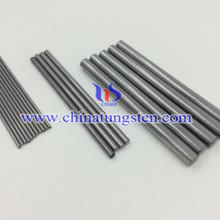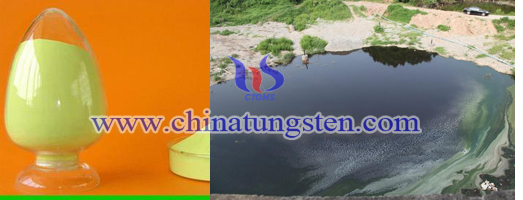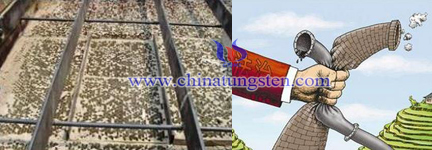Environmental Policy and Brexit Affected Tungsten Market
- Details
- Category: Tungsten's News
- Published on Monday, 04 July 2016 19:08
- Written by yiping
- Hits: 525

In late June, Chinese announced the "National Catalogue of Hazardous Wastes" 2016 edition. The catalogue noted the tungsten slag which produced for ammonium paratungstate alkaline decomposition process and molybdenum slag which produced form molybdenum removal process and waste water are included in the non-ferrous metal smelting waste, belong to toxic smelting waste. But other tungsten products smelting slag has not yet been included in the catalogue.
In June 29, 2016, Ganzhou Tungsten Industry Association held a meeting with APT smelting enterprises directors. This meeting fully analyzed the impact of this environmental policy on APT smelting enterprises and discussed the appropriate response options. This environmental policy will begin on August 1 and for APT smelting enterprises still have one month grace period. The relevant manufacturers can find a way to solve the difficulties and problems. It is said environmental policy will not great influence on the smelting factory, mainly because tungsten market is now at a low season, having low operating rates, so the prices continued to slight decline and tungsten raw material and tungsten finished manufacturers enthusiasm is not high.
Brexit resulting pound continues to fall, the euro against the dollar also fell more than three percent, while the swiss franc and the Japanese yen has been skyrocketing. Brexit direct affects the global currency market. In order to stabilize the economy, many countries have begun to currency intervention. Europe As a cross-border export electricity supplier important market, is now in the economy shocks and the pound and the euro will likely continued to depreciate, which to some extent, in favor of tungsten market import, such as imports of tungsten related equipment. But in this economic situation will reduce the profits of business, which is not conducive to exports. The official pointed out, the current China logistics companies which employ cross-border e-commence in EU usually through the UK into the EU, therefore the British leaved form Europe have a certain impact on China-EU cross-border logistics service providers. Brexit will make the global economy in long grace period, so countries should make corresponding measures to stabilize their economies.
| Tungsten Supplier: Chinatungsten Online www.chinatungsten.com | Tel.: 86 592 5129696; Fax: 86 592 5129797;Email:sales@chinatungsten.com |
| Tungsten News & Prices, 3G Version: http://3g.chinatungsten.com | Molybdenum News & Molybdenum Price: http://news.molybdenum.com.cn |
Coal Market Warmed in June, Tungsten Trioxide Denitration Catalyst Assists Ultra Low Emission
- Details
- Category: Tungsten's News
- Published on Monday, 04 July 2016 17:35
- Written by chunyan
- Hits: 642
 This year, both the coal supply and demand maintained low, because of the coal mine production by the upstream, downstream and macroeconomic impact of limited production, energy conservation and other factors,. The first half of June, south of China is in a time of the rainy season, residents used the less amount of electricity, plus the power transmission from west to East increased and the abundant hydropower and other factors, the number of shipping of the coal plants have been suppressed. However, as temperature rise, the stuffy weather come into being, the loading of air-conditioning cooling has been increased, the public electricity surge, and also brought an increase in the amount of coal. June, coal prices rose slightly by 10 yuan (RMB)/ton, the media reported, in July, the coal prices will rise by 10~15 yuan (RMB)/ ton.
This year, both the coal supply and demand maintained low, because of the coal mine production by the upstream, downstream and macroeconomic impact of limited production, energy conservation and other factors,. The first half of June, south of China is in a time of the rainy season, residents used the less amount of electricity, plus the power transmission from west to East increased and the abundant hydropower and other factors, the number of shipping of the coal plants have been suppressed. However, as temperature rise, the stuffy weather come into being, the loading of air-conditioning cooling has been increased, the public electricity surge, and also brought an increase in the amount of coal. June, coal prices rose slightly by 10 yuan (RMB)/ton, the media reported, in July, the coal prices will rise by 10~15 yuan (RMB)/ ton.| Tungsten Oxide Supplier: Chinatungsten Online www.tungsten-oxide.com | Tel.: 86 592 5129696; Fax: 86 592 5129797;Email:sales@chinatungsten.com |
| Tungsten News & Prices, 3G Version: http://3g.chinatungsten.com | Molybdenum News & Molybdenum Price: http://news.molybdenum.com.cn |
Illegal Dumping Jailed in Yunnan, WO3 Photocatalyst Degrades Landfill Leachate
- Details
- Category: Tungsten's News
- Published on Friday, 01 July 2016 17:36
- Written by chunyan
- Hits: 554

| Tungsten Oxide Supplier: Chinatungsten Online www.tungsten-oxide.com | Tel.: 86 592 5129696; Fax: 86 592 5129797;Email:sales@chinatungsten.com |
| Tungsten News & Prices, 3G Version: http://3g.chinatungsten.com | Molybdenum News & Molybdenum Price: http://news.molybdenum.com.cn |
Interpret "National Catalogue of Hazardous Wastes", Regenerate WO3 Waste Denitration Catalyst
- Details
- Category: Tungsten's News
- Published on Friday, 01 July 2016 17:39
- Written by chunyan
- Hits: 612
 Recently, China has revised and promulgated the "National Catalogue of Hazardous Wastes" (version 2016), and will be taken effect on August 1st, 2016. In this revising, the 49 major categories 400 kinds of hazardous wastes of the 2008 edition of was adjusted to 46 major categories 479 kinds (362 kinds from the original catalogue, and 117 kinds added); wherein the primary organic solvents waste, waste halogenated organic solvents and waste organic solvent are combined into the waste organic solvents and waste solvent-containing, and removed the containing polychlorinated furans waste and containing polychlorinated dioxins, while increased the waste category of waste catalyst at the same time.
Recently, China has revised and promulgated the "National Catalogue of Hazardous Wastes" (version 2016), and will be taken effect on August 1st, 2016. In this revising, the 49 major categories 400 kinds of hazardous wastes of the 2008 edition of was adjusted to 46 major categories 479 kinds (362 kinds from the original catalogue, and 117 kinds added); wherein the primary organic solvents waste, waste halogenated organic solvents and waste organic solvent are combined into the waste organic solvents and waste solvent-containing, and removed the containing polychlorinated furans waste and containing polychlorinated dioxins, while increased the waste category of waste catalyst at the same time.| Tungsten Oxide Supplier: Chinatungsten Online www.tungsten-oxide.com | Tel.: 86 592 5129696; Fax: 86 592 5129797;Email:sales@chinatungsten.com |
| Tungsten News & Prices, 3G Version: http://3g.chinatungsten.com | Molybdenum News & Molybdenum Price: http://news.molybdenum.com.cn |
First "Botanical Garden" Sewage Treatment Plant Settled Shanghai, WO3 Photocatalyst Treats Industrial Waste Water
- Details
- Category: Tungsten's News
- Published on Thursday, 30 June 2016 17:49
- Written by chunyan
- Hits: 620

| Tungsten Oxide Supplier: Chinatungsten Online www.tungsten-oxide.com | Tel.: 86 592 5129696; Fax: 86 592 5129797;Email:sales@chinatungsten.com |
| Tungsten News & Prices, 3G Version: http://3g.chinatungsten.com | Molybdenum News & Molybdenum Price: http://news.molybdenum.com.cn |





 sales@chinatungsten.com
sales@chinatungsten.com